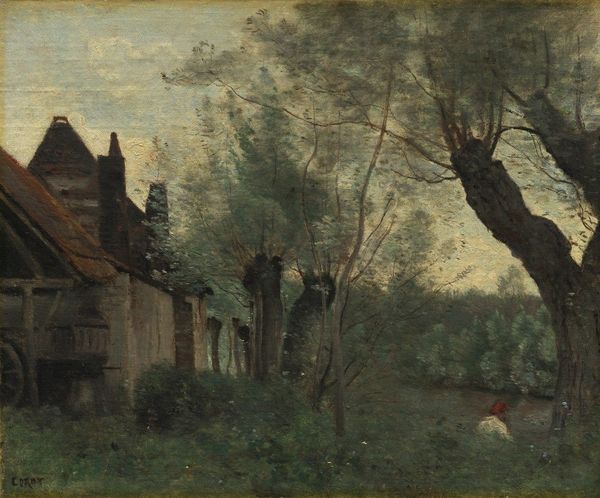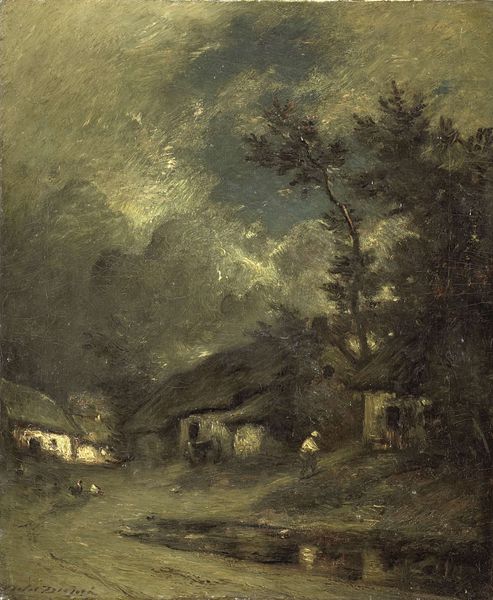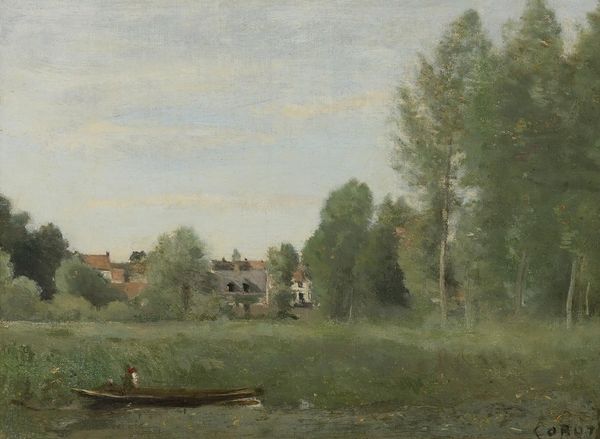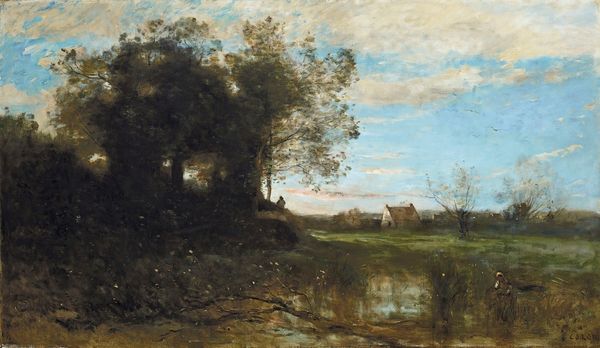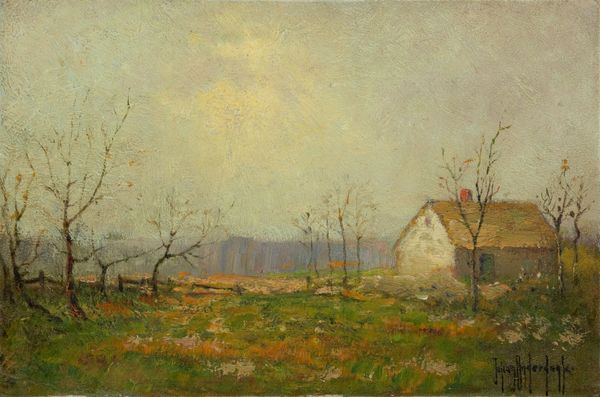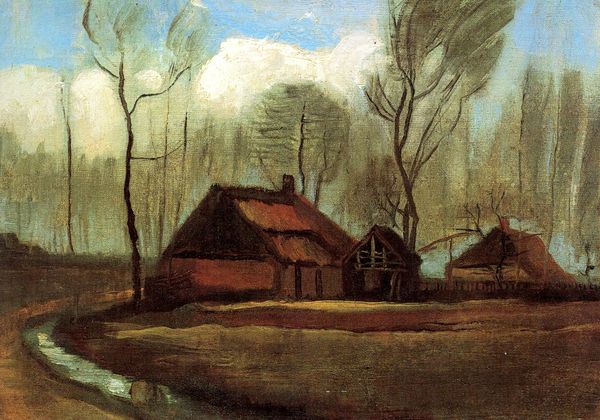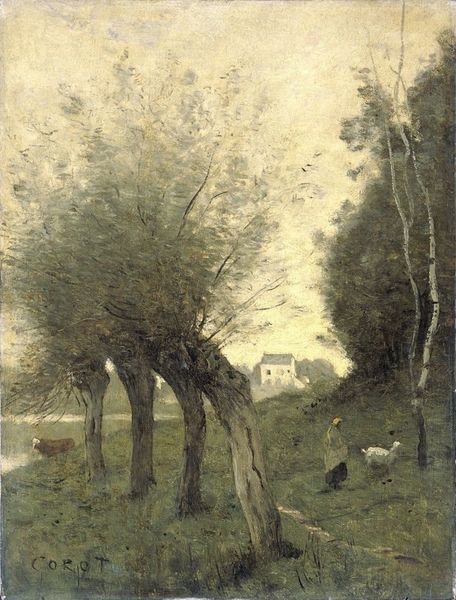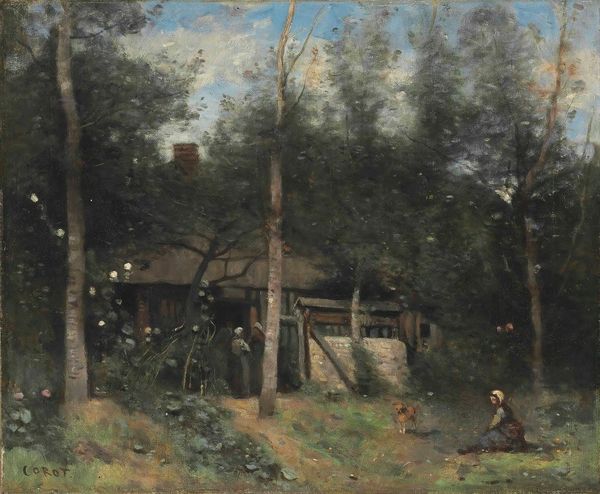
Copyright: Public Domain: Artvee
Curator: What strikes me first about Camille Corot’s “A Corner of a River with House and Poplars,” painted around 1850-1855, is the incredible stillness it evokes. Editor: Stillness, definitely. It’s almost melancholic. The muted palette and bare trees reaching toward a heavy sky, reflected in the river...it feels like a very particular kind of solitary contemplation. Curator: Corot was deeply invested in Romanticism, finding sublime beauty in the everyday. In choosing a humble riverside dwelling as a subject, he elevates the ordinary. The oil paint gives it a texture that encourages the viewer to consider not only the subject matter, but the very process of seeing itself. Editor: Right, the way the paint is applied in these wispy strokes… It isn’t trying to replicate reality perfectly, but to capture an essence, a mood. This feels particularly poignant if we consider how industrialisation was reshaping the French landscape at this time. Was this scene, this quietude, already something lost? Curator: It is possible to understand that tension through the symbols, here the architecture meets with organic patterns of trees that were the primary elements of sacral places. A very important relationship with land and place emerges. This is reinforced by its origins in plein-air painting, capturing fleeting moments directly from nature. Editor: I agree. And thinking about place – who lived in that house? How did encroaching industrialisation affect them? What were their experiences, filtered through the lens of class, gender? That is part of the emotional impact that the scene leaves on the contemporary mind. Curator: These are important lenses through which to see and it is beautiful that the same image invites so many narratives and meanings. Editor: Precisely. It is always a dialogue with our time, that defines how we perceive the cultural memory within an image. Thank you!
Comments
No comments
Be the first to comment and join the conversation on the ultimate creative platform.


